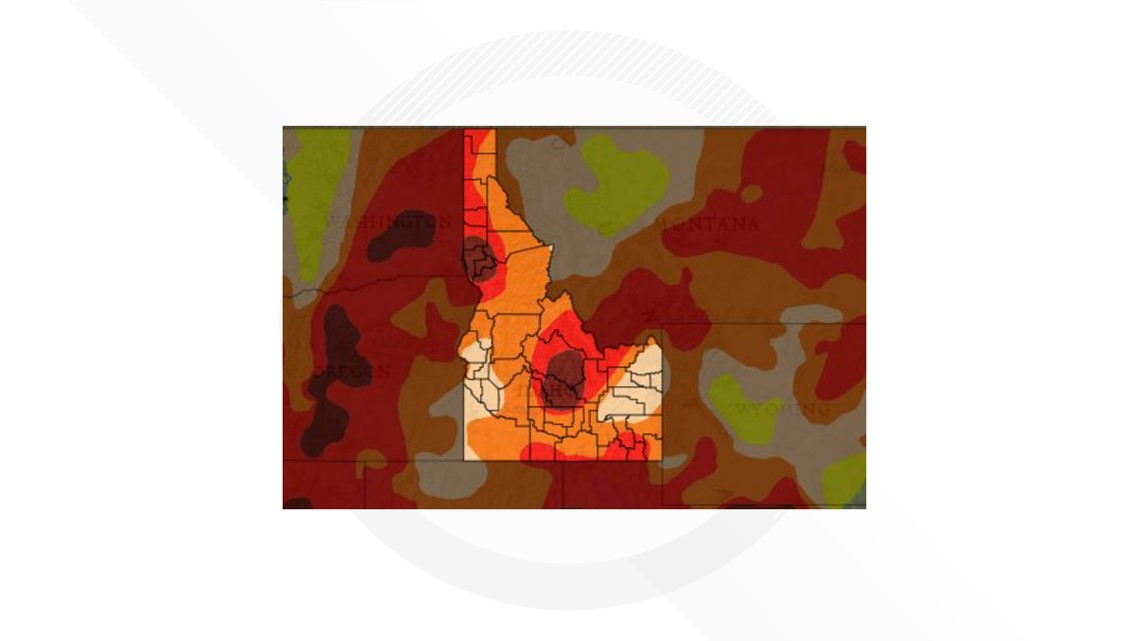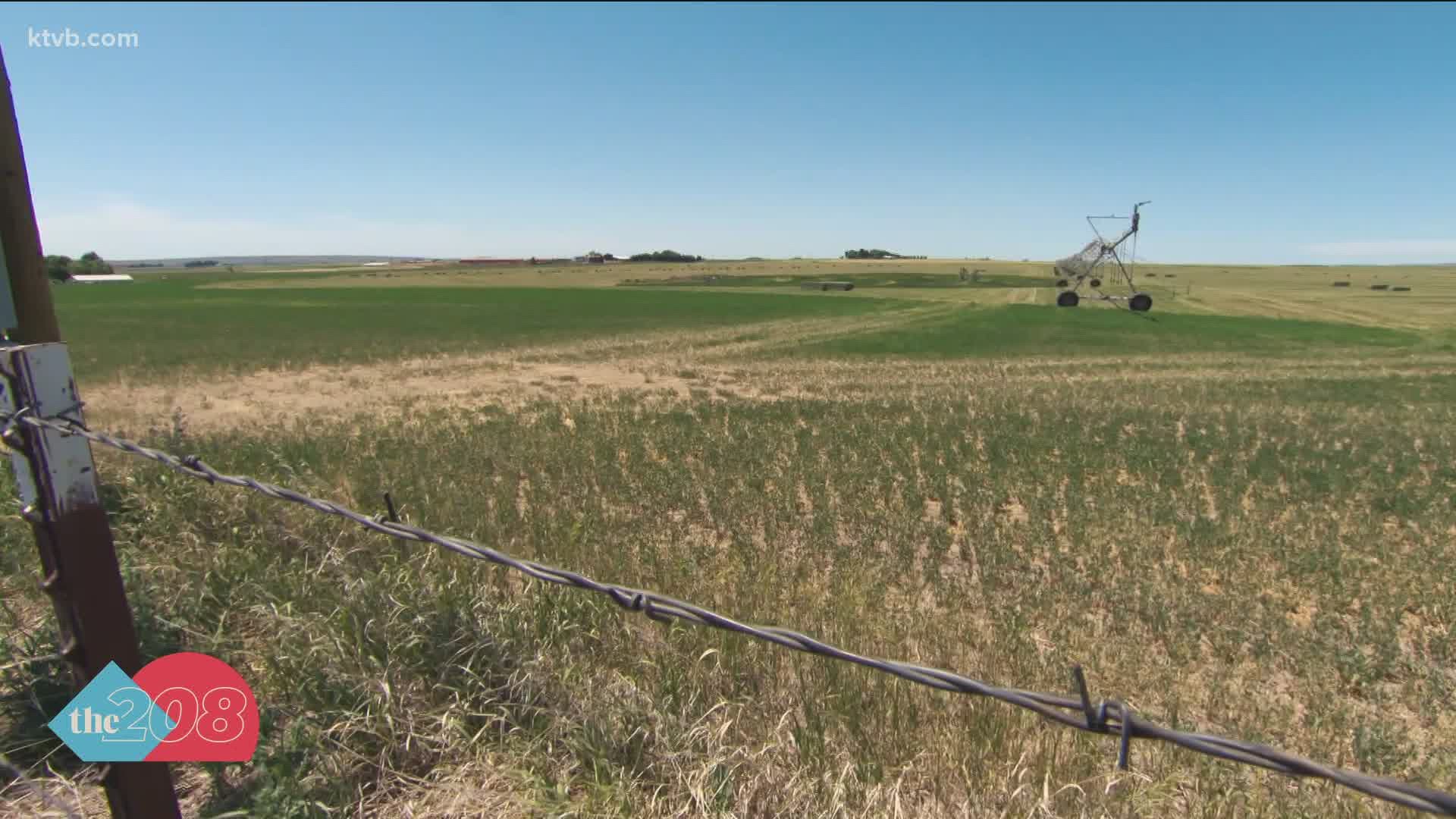BOISE, Idaho — Editor's note: The video posted above, from June 22, is from a story about the drought-shortened crop season in Lincoln County.
The percentage of Idaho land area experiencing exceptional drought conditions has increased more than tenfold in the past week, according to the U.S. Drought Monitor.
The U.S. Drought Monitor uses five categories to describe drought conditions, ranging from D0 - "abnormally dry" - to D4, or "exceptional."
All of Idaho is now experiencing at least a moderate drought, D1 on the scale. About 84% of the state is at D2 - "severe drought," and about 33% is in D3 - "extreme drought."
Numbers updated Wednesday show the percentage of Idaho land in exceptional drought increased from 0.84% on July 6 to 8.97% on Tuesday, July 13. That area includes parts of Blaine, Butte, Camas, Custer, and Lincoln counties in south-central Idaho; and parts of Clearwater, Idaho, Latah, Lewis, and Nez Perce counties in north-central Idaho.
Impacts of exceptional drought include decreased fish and wildlife populations, degradation of habitat, and high fire danger. Wildfires are already burning somewhere in both of the regions experiencing this level of drought.


A month ago, only one-third of Idaho was in severe drought or worse -- with the Wood River Valley already experiencing exceptional drought. Even before the first day of summer, irrigation water from Magic Reservoir was shut off.
While the Boise River Basin is in the less-severe "moderate" drought category, water is becoming more scarce. Levels are at 27% and 53% for Arrowrock and Anderson Ranch reservoirs, respectively. Both reservoirs feed into Lucky Peak, where the U.S. Army Corps of Engineers and Bureau of Reclamation plan to start lowering water levels on July 23, to keep up with irrigation demands for farms and homeowners.
Watch more on wildfires in the West:
See all of our latest coverage in our YouTube playlist:

